Journalism Students Document Mass Sea-Turtle Nesting on Costa Rica Trip
Stories on the Environment, People and Agriculture Are Filed During the 2-Week Field-Reporting Course
Costa Rica (Feb. 13, 2017) — Timing was everything for nine students on the Missouri School of Journalism winter break field-reporting course in Costa Rica: They picked the right day to stake out the mass arrival of sea turtles on one of the world’s few remaining beaches where the turtles nest.
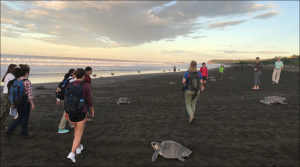
The students were on the scene Dec. 30 at dawn when 8,000 olive ridley sea turtles hit the beach near the Pacific coastal town of Ostional in a natural wonder called an arribada, Spanish for “arrival.” Timed with the darkest phase of the moon, the turtles waddled out of the surf, scoured out nests on the beach, laid nearly 100 eggs each and trudged back into the ocean.
“Seeing the olive ridley turtles come onto the shore was a phenomenal experience, and covering their story was an even greater one,” said Jalyn Henderson, a radio-television journalism junior whose video story focused on the local cultural connection with the event. “I wasn’t sure we were going to catch the arribada, but I’m so happy I was able to see something many don’t have the chance to and share that with others through video.”
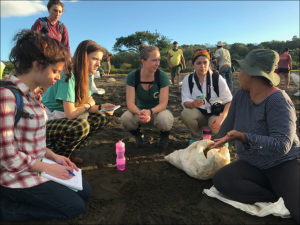
Working as a team, the Missouri journalism students documented several angles of the natural event and the legal harvesting by Ostional residents of a small percentage of the eggs. In an arrangement with the national government and conservation groups, the local economy benefits from the harvested eggs, and the rest of the eggs and turtles benefit from residents who protect them from large crowds and poachers.
Said Holly Enowski, a freshman in Science and Agricultural Journalism: “Learning about the political, economic, social and historical importance and complications of the arribada for the town added depth to the story and made it relatable for a variety of audiences.” Enowski’s turtle politics story was among several done by the team on the science, policy and economics of the turtle egg harvesting.
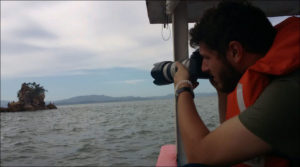
The trip was part of the seventh annual field-reporting course “Covering Nature and Society in the Developing World,” which since 2011 has taken students on a two-week trip through the Pacific Coast region of northwestern Costa Rica and up to small towns, farms and forests in the mountains. Along the way the students report on the people, environment, agriculture and natural resources.
Students cover such political conflicts as water rights, demand for new energy sources, and managing a world-renowned national park system amid rising pressure from the nation’s two main industries: agriculture and tourism.
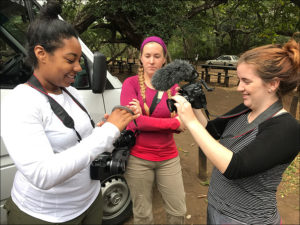
This year’s trip, offered by the Global Programs office at the Missouri School of Journalism, ran Dec. 28 through Jan. 11. Liza Anderson, junior studying documentary journalism, produced a video highlighting the student experience.
The course, led by Bill Allen, assistant professor of science journalism, shows journalism students how to apply the Missouri Method in an international setting. As they travel, the students file stories, pictures and videos on the MU Costa Rica website and post updates on Twitter, Instagram and Facebook.
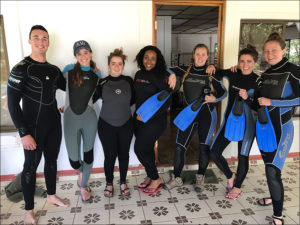
Sometimes they post while news is breaking around them. For example, on a tour of a protected fishing area in the Gulf of Nicoya on Jan. 7, the captain of the students’ boat saw another boat with men fishing illegally.
As the captain explained the evidence and called the Costa Rican coast guard, the students documented the event on social media. Later, radio-television journalism senior Amanda Henderson filed a story about the incident with a revealing picture by senior photojournalism major Nadav Soroker.
During last year’s trip the students covered a community protest over an illegal water pipeline and an international humanitarian crisis involving refugees from Cuba.
Among other stories produced this year by the students was “An Evening with Tarantulas,” about a night hike in the Monteverde cloud forest on New Year’s Eve.
“After long, busy days, it can seem easy to ‘check out’ and be done, but producing high-quality stories takes time and energy that the people of Costa Rica deserve,” Enowski said. “I will carry that same idea forward in my journalism career.”
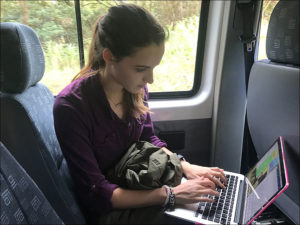
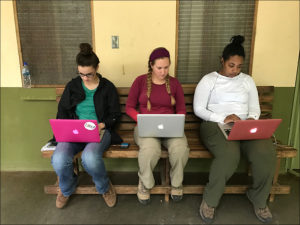
Updated: October 13, 2020